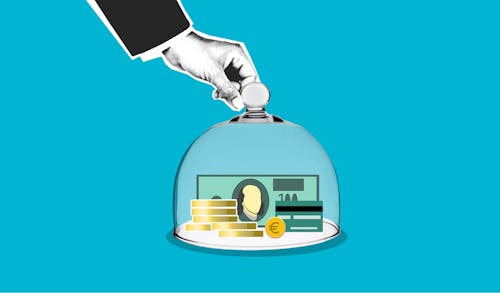Introduction
Money is an essential part of everyday life, influencing economic activities, social interactions, and personal decisions. Despite its ubiquitous presence, the concept of money is complex and multifaceted, encompassing various forms, functions, and impacts on society. This article explores the evolution of money, its primary functions, the role it plays in modern economies, and the broader implications for individuals and societies.
The Evolution of Money
Money has undergone significant transformations throughout history, evolving from primitive trade systems to sophisticated digital currencies.
1. Barter System
Before money was invented, people relied on the barter system to exchange goods and services directly. This system had significant limitations, primarily the “double coincidence of wants,” where both parties needed to want what the other offered. The inefficiency of barter led to the need for a more convenient medium of exchange.
2. Commodity Money
The first form of money was commodity money, which consisted of items with intrinsic value, such as gold, silver, and other precious metals. These items were widely accepted because of their durability, divisibility, and intrinsic worth. The use of commodity money facilitated trade and provided a more stable and efficient means of exchange than barter.
3. Representative Money
As trade expanded, carrying large amounts of commodity money became impractical. This led to the development of representative money, which consisted of paper notes or certificates that represented a claim on a commodity, such as gold or silver. These notes could be exchanged for the actual commodity upon demand, making trade more convenient.
4. Fiat Money
Fiat money emerged as governments began issuing currency that had no intrinsic value but was accepted as legal tender by decree. Unlike commodity money, fiat money is not backed by physical assets but by the trust and authority of the issuing government. This form of money allows for greater flexibility in monetary policy and economic management.
5. Digital and Cryptocurrencies
The digital age has introduced new forms of money, such as digital currencies and cryptocurrencies. Digital currencies are electronic versions of traditional money, used for online transactions and digital payments. Cryptocurrencies, like Bitcoin and Ethereum, are decentralized digital assets that use blockchain technology to secure transactions and control the creation of new units. These innovations are transforming the financial landscape and challenging traditional notions of money.
Functions of Money
Money serves several essential functions in an economy, facilitating trade, value storage, and economic stability.
1. Medium of Exchange
The primary function of money is to act as a medium of exchange, facilitating the buying and selling of goods and services. By providing a common measure of value, money eliminates the inefficiencies of barter and simplifies transactions. This function is crucial for economic activity, enabling markets to operate smoothly and efficiently.
2. Unit of Account
Money serves as a unit of account, providing a standard measure of value for goods and services. This function allows individuals and businesses to compare prices, keep financial records, and make informed economic decisions. By establishing a common metric for value, money simplifies accounting and enhances economic transparency.
3. Store of Value
Money functions as a store of value, allowing individuals and businesses to preserve wealth over time. Unlike perishable goods, money retains its value and can be saved for future use. This function is essential for financial planning, investment, and economic stability, enabling individuals to save and accumulate wealth.
4. Standard of Deferred Payment
Money acts as a standard of deferred payment, facilitating credit and lending. This function allows individuals and businesses to borrow and lend money, enabling investment and economic growth. By providing a reliable means of repaying debts, money supports financial markets and promotes economic development.
The Role of Money in Modern Economies
Money plays a central role in modern economies, influencing financial systems, monetary policy, and economic behavior.
1. Financial Systems and Banking
Money is the backbone of financial systems, underpinning banking, investment, and payment mechanisms. Banks and financial institutions use money to facilitate deposits, loans, and investments, driving economic activity. The availability and flow of money within an economy impact interest rates, inflation, and overall economic health.
2. Monetary Policy
Central banks use monetary policy to manage the supply of money and influence economic conditions. By adjusting interest rates and conducting open market operations, central banks aim to control inflation, stabilize currencies, and promote economic growth. Monetary policy decisions are critical for maintaining economic stability and responding to economic crises.
3. Economic Behavior and Consumer Confidence
Money significantly impacts economic behavior and consumer confidence. Changes in money supply, interest rates, and inflation influence spending, saving, and investment decisions. Consumer confidence in the value and stability of money is essential for economic stability, as it affects consumption patterns and economic growth.
4. Global Trade and Exchange Rates
Money facilitates global trade by providing a common medium for international transactions. Exchange rates, which determine the value of one currency relative to another, play a crucial role in international trade and investment. Fluctuations in exchange rates impact trade balances, capital flows, and economic relationships between countries.
Implications of Money for Individuals and Societies
The nature and management of money have profound implications for individuals and societies, affecting wealth distribution, economic opportunities, and social dynamics.
1. Wealth Distribution and Inequality
The distribution of money and wealth within a society significantly influences economic inequality. Access to money and financial resources determines individuals’ ability to invest, accumulate wealth, and improve their standard of living. Policies that affect money distribution, such as taxation and social welfare, play a crucial role in addressing economic inequality.
2. Financial Inclusion and Access to Credit
Access to money and financial services is essential for economic participation and empowerment. Financial inclusion, which involves providing access to banking, credit, and financial services to underserved populations, promotes economic development and reduces poverty. Digital and mobile banking innovations are expanding financial inclusion, particularly in developing countries.
3. Inflation and Purchasing Power
Inflation, the rate at which prices for goods and services rise, affects the purchasing power of money. High inflation erodes the value of money, reducing individuals’ ability to purchase goods and services. Central banks aim to manage inflation through monetary policy to maintain stable purchasing power and economic stability.
4. Technological Disruption and Financial Innovation
Technological advancements are disrupting traditional financial systems and transforming the nature of money. Innovations such as cryptocurrencies, blockchain, and digital payment systems are challenging established financial institutions and introducing new ways of conducting transactions. These developments have the potential to enhance efficiency, reduce costs, and democratize access to financial services.
The Future of Money
The future of money is likely to be shaped by continued technological innovation, evolving economic policies, and changing social dynamics.
1. Digital and Cryptocurrencies
Digital currencies and cryptocurrencies are expected to play an increasingly prominent role in the global economy. Central banks are exploring the issuance of central bank digital currencies (CBDCs) to enhance payment systems and improve financial inclusion. Cryptocurrencies may continue to gain acceptance as alternative assets and payment methods, despite regulatory challenges.
2. Sustainable Finance and Green Money
As the world grapples with climate change and environmental sustainability, the concept of “green money” is gaining traction. Sustainable finance involves directing financial resources towards environmentally friendly and socially responsible projects. Green bonds, climate funds, and sustainable investment initiatives are examples of how money can be leveraged to address global challenges.
3. Financial Literacy and Education
Promoting financial literacy and education is crucial for empowering individuals to make informed financial decisions. As financial systems become more complex, individuals need the knowledge and skills to navigate economic opportunities and challenges. Financial education initiatives aim to enhance understanding of money management, investment, and economic principles.
4. Ethical and Inclusive Finance
The future of money may also involve a greater focus on ethical and inclusive finance. Ethical finance prioritizes investments and financial practices that align with social values and ethical standards. Inclusive finance seeks to ensure that all individuals, regardless of their socio-economic status, have access to financial services and opportunities.

Conclusion
Money is a fundamental element of modern economies, influencing economic activities, financial systems, and individual lives. Its evolution from barter to digital currencies reflects the ongoing quest for more efficient, secure, and inclusive financial systems. Understanding the functions and impact of money is essential for navigating the complexities of the global economy and addressing the challenges and opportunities that lie ahead. As technological advancements, policy decisions, and social dynamics continue to shape the future of money, the focus must remain on promoting economic stability, financial inclusion, and sustainable growth for all.















